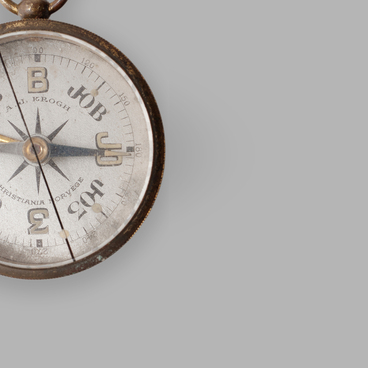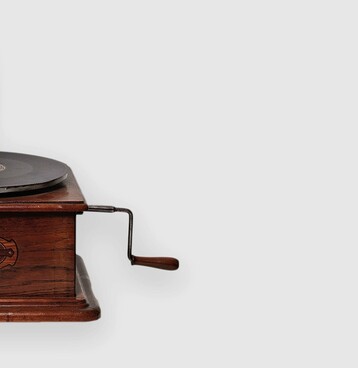The “Favorite Record” record contains the romance “Cries of the Snow-White Seagull” — an aria from the opera “The Magic Flute”. Nikolay Artemyevich Shevelev performs the baritone part and Maria Petrovna Kalinovskaya — the soprano. In their journals and letters, the participants of the 1912 Georgy Brusilov polar expedition repeatedly mentioned that they listened to gramophone records during their voyage on the schooner “Saint Anna”. In his journal, Valerian Albanov wrote:
“Cries of a Snow-White Seagull”, record
… The gramophone starts playing. The records ‘Come Ashore…’ and ‘Cries of the Snow-White Seagull’ have been particularly successful lately.”
“The cries of the snow-white seagull,
The smell of the sea and pine,
Incessant, serene
The splash of a brooding wave.
In a haze of pink-crystal
The dying sunset,
The first sad star
A golden, distant look.
Shining brightly with lights
The shore in the ghostly distance,
As in a fog in front of us
Giant are the ships.
A wonderful crescent moon full of tenderness,
In its regal splendor.
This night we are like in a fairy tale
We live a delightful life.
The “Favorite Record” factory was located in Hanover. The recording and release of records with Russian repertoire was supervised by M. Pushett, whose office was in Warsaw. The sound engineer Birkgan made the recordings. “Favorite Record” was the only publisher who indicated on the label the day, month and year of recording.
In the early 20th century, the first gramophone records did not last long: the pickup of the gramophone weighed more than 100 grams and quickly wore them out. It was required to change steel needles after each side of the record was played. This was often neglected, and with repeated use of needles, the record deteriorated even faster.
In the late 1920s, a new revolution took place in the recording world. Recording through a horn was replaced with a new electroacoustic method of recording with a microphone. The microphone was invented by the same Emil Berliner, who designed the first gramophone.
Due to the reduction of distortion, the frequency range has significantly expanded. In the 1930s, one side of the record could hold only one track, and often a concert recording of a single artist was sold as a set of several records, which were usually packaged in cardboard or — less often — leather boxes. Because such boxes resembled photo albums, they were called “record albums”, as in “albums with recordings”.


